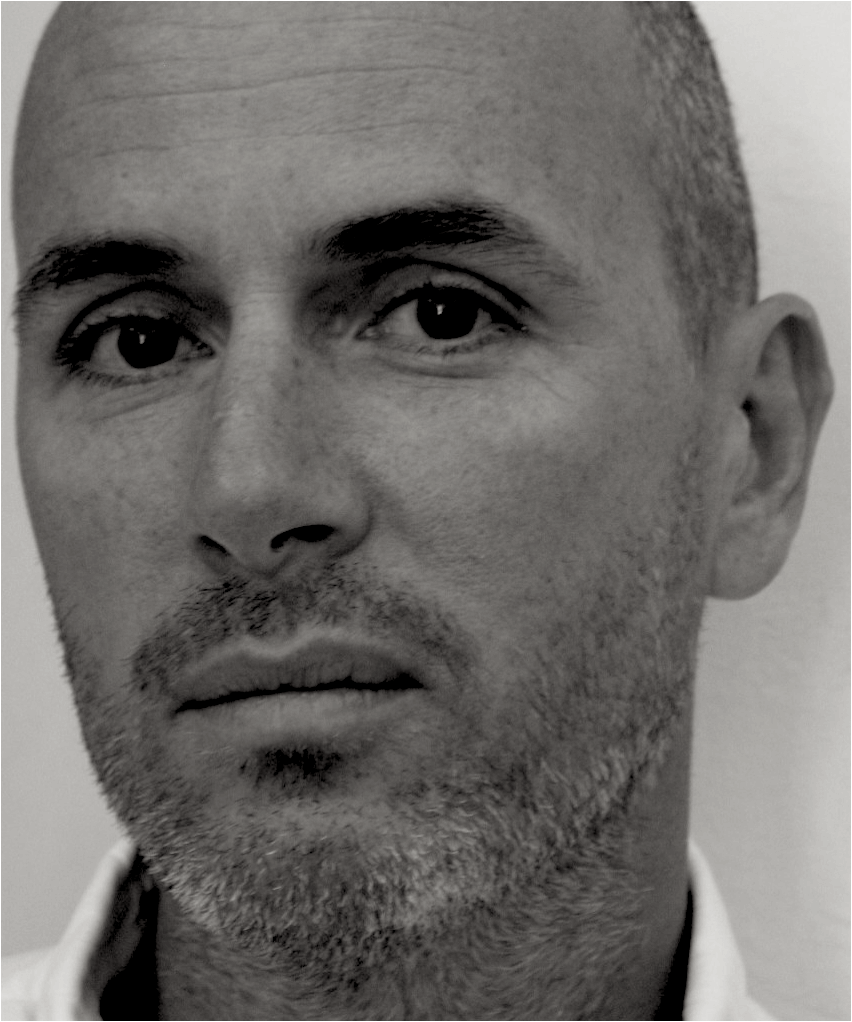 Midwestern Gothic staffer Marisa Frey talked with author Michael Bazzett about his work The Interrogation, the fluid nature of identity, learning to incorporate humor, and more.
Midwestern Gothic staffer Marisa Frey talked with author Michael Bazzett about his work The Interrogation, the fluid nature of identity, learning to incorporate humor, and more.
**
Marisa Frey: What’s your connection to the Midwest?
Michael Bazzett: I was born in Chicago. My family moved to Minnesota when I was in first grade. I’ve lived in various towns in Minnesota for roughly 40 of my 50 years, the last 17 in Minneapolis.
MF: How does living in the Midwest influence the way you approach writing?
MB: There’s a lot that remains unspoken in Minnesota. The way people talk has been informed by a Scandinavian reticence, and conversations often have subtext. Wry understatement is big. That’s definitely shaped my aesthetic, and probably explains why I’m drawn to Polish poets like Wislawa Szymborska and Zbigniew Herbert: their Cold War aesthetic that responded to repression by saying things sideways and telling it slant.
Yet what is said is usually pretty direct and plainly said, which I think has informed my diction and my approach as well, as I favor a certain kind of transparency in my language. I don’t mind difficult poems, but I do mind difficultly for the sake of difficulty. That feels Midwestern to me, that natural wariness toward pretension and feeling at home in sardonic humor.
MF: The Interrogation explores one man’s different ages and desires, resulting in multiple, sometimes contradictory facets of the self. What was your process for writing and thinking about this?
MB: The short answer would be that I asked a lot of questions, hence the title. I was interrogating what it means to keep it real amidst the late-stage capitalism we’re marinated in, asking what it means to live an authentic life amidst so much artifice and virtuality, wondering to what extent we carry our childhood with us forever, what it means to be vulnerable, what it means to be a man, what it means to be white, what it means to be human and humane.
I think our identities are much more fluid than we generally think. The idea of a stable self has some utility, true, and thus it persists. Yet we literally shed our skin every seven months or so. We’re remarkably relational creatures: change our context and we change. It’s not just a metaphor, it’s bio-chemistry. We’re rivers and filters and mirrors as much as we are self-contained things, and that’s why somewhere along the line, someone used a verb to name us: we’re human beings (or humans being.)
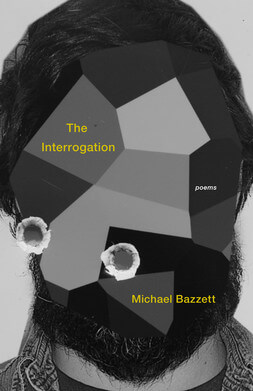
MF: What is a key question you were hoping to answer or offer some insight on in The Interrogation?
MB: How to embrace the pain & wonder of wide awakeness.
MF: While your collection projects a darkly fantastic world—a man with no mouth speaks, an older and younger version of the same person sit down for a conversation—the simplicity of the lines creates a conversational tone. What draws you to this style?
MB: I know my poems can sometimes come across as a bit strange, yet I’m being as honest as I can. The truth is usually weird. And a lot of the work stems from asking “What if?” Maybe you feel like your voice is lost in the cacophony of the world? Make it literal: the man has no mouth. Once the imagination has done its work, the weirdness needs grounding, so I try to make the writing as clear and hard as glass. I want it be, as Seamus Heaney once said: Exact. Truthful. Melodious.
MF: How has your writing changed over time, in form and content?
MB: I used to stare at trees and consider how they are the lungs of the hillside and then strive to capture that in some spare, meditative lines. There are more people in my poems now, and the work has gotten weirder, which is another way of saying I’ve gotten more honest. It’s also funnier. I didn’t used to allow myself to do that, to use humor’s blade in that way, but comedy can be very transgressive; you can say things you can’t say elsewhere. And it creates a new entry point into a poem, a different doorway that might swing open a little more readily for some readers. I love it now when people refer to my work as a gateway drug to the hard stuff, i.e. real poetry.
MF: Do you think poetry—or writing, more broadly—should respond to the political and social climate of the moment?
MB: If poets are taking their task of undeceiving the world to heart, I don’t see how it can’t. Calling things what they are is a radical act. Facts have become so destabilized in today’s world, poetry is the place to look for truth. We need to imagine ourselves some new realities.
MF: What’s next for you?
MB: I have a book length translation of the Popol Vuh, the creation epic of the Maya, coming out the spring of 2018 from Milkweed Editions, and I’m currently working on some new poems that derive all of their energy directly from the sun, via photosynthesis.
If at all possible, I’d also like to go troll hunting in Norway.
**
Michael Bazzett is the author of The Interrogation (Milkweed Editions, 2017), Our Lands Are Not So Different (Horsethief Books, 2017), and You Must Remember This (Milkweed Editions, 2014), which received the 2014 Lindquist & Vennum Prize for Poetry. Bazzett has received the Bechtel Prize from Teachers & Writers Collaborative and a fellowship from the National Endowment for the Arts. He teaches at The Blake School and lives in Minneapolis, Minnesota. Learn more at michaelbazzett.com.
November 17th, 2017 |
 Midwestern Gothic staffer Meghan Chou talked with author Edward McPherson about his book The History of the Future: American Essays, shaping an essay collection, the multiple perspectives of history, and more.
Midwestern Gothic staffer Meghan Chou talked with author Edward McPherson about his book The History of the Future: American Essays, shaping an essay collection, the multiple perspectives of history, and more.
**
Meghan Chou: What’s your connection to the Midwest?
Edward McPherson: For the past five years I’ve lived in St. Louis, where I teach at Washington University. (I married someone from Missouri, so before that I had visited the state a fair amount.) I also spent four years in Minneapolis. But I moved there after eight years of living in New York City, and I was born and raised in Texas, so my connection with the Midwest remains that of a curious outsider.
MC: The History of the Future features seven essays, each set in a different city of the United States: St. Louis, Gettysburg, Los Angeles, New York, the Trinity site, North Dakota, and Dallas. How did you decide which cities to focus on and what significance does each hold to you personally?
EM: I wrote the book one essay at a time, desperately hoping the whole thing might cohere into something greater than the sum of its parts. I started out wanting to write about Dallas, my hometown, because I hadn’t written much about it and I thought it was interesting that they were rebooting the famous TV show (Dallas) just as the city was nearing the anniversary of the Kennedy assassination. Who shot JFK/Who shot JR? (Alienation, anger, conspiracy… How do we handle history that refuses to stay in the past?) From there, I just followed my nose to whatever place felt most compelling. Not every idea worked out, but soon a pattern emerged: I was interested in the ways that the past might intrude (unexpectedly, uncomfortably) into the present. The subject matter kept shifting, obviously—the book is a collision of disparate topics—but in all the essays, I was either returning to a place I knew well (and had a personal connection to: Dallas, Gettysburg, New York, St. Louis) or posing as a tourist (as problematic as that is) in order to see something I felt I needed to experience firsthand (the site of the first atomic detonation, the oil fields and man camps of North Dakota, doomsday bunkers in Los Angeles, etc.). So I baby-stepped my way to a book; it took five years and got darker as things in this country seemed to take a grim turn.
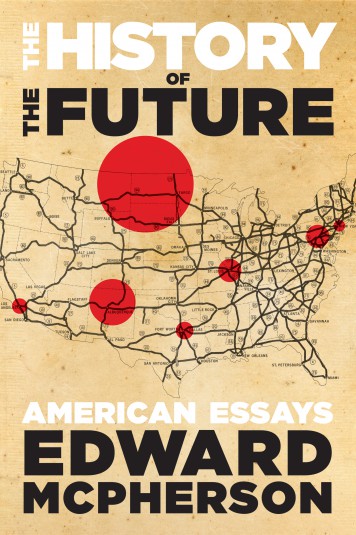
MC: In order for a collection to work as successfully as The History of the Future, the essays need to hold a common theme or connection. What connections did you want the reader to follow between the seven essays, specifically with regards to the presence of violence and oppression in each of the cities?
EM: I’m a fan of this quote from Ben Greenman that I’ve tacked up over my desk: “A book of essays can be a constellation. Individual pieces shine like stars, but to see the whole project as a unified thing requires a mythology. You need faith to make out a shape around all those dots of light, to believe in the bear or the swan.” I was always writing a book—not just individual pieces for publication—so I knew I wanted the essays to converse, to complicate and perhaps even contradict each other, in places. But you can’t just repeat yourself and you can’t hit a theme too squarely on the head (else it becomes trite). You have to have faith that your aesthetic/artistic/intellectual/moral preoccupations will bind the thing together while also creating some friction. In terms of violence and oppression, that wasn’t hard—scratch any surface in America and you’ll find it. What I became interested in was a kind of American amnesia, how trauma in the past was being forgotten or sanitized—for political purpose, or simply due to distraction or nostalgia or what-have-you)—and yet you couldn’t understand our current reality (or imagine where we might be going) without really trying to look at those past wounds.
MC: You spent time at the University of Minnesota as both a student and teacher, but Minnesota is not one of the states represented in The History of the Future. Why did Minnesota not fit well with the greater collection and the reflections you wanted to express?
EM: Oh, I had ideas for Minnesota! But none of them held my interest in the end. (Famous last words—perhaps I’ll write about them in the future?) Plus once the North Dakota essay grew so long (at about 80 pages), I didn’t want the book to get too top-heavy on the upper Midwest. As I was rounding out the collection, I tried for some sort of geographical coverage, though plenty of places were left out. For instance, there’s nothing directly about the Deep South, though of course there’s so much material there. I just couldn’t imagine writing about the south and not addressing racism, which was already the focus on the long essay on St. Louis. Early on, I knew the book could never be complete.
MC: As a follow up, do you observe a cultural disconnect between the Midwest and other regions of the United States?
EM: I think the idea of a disconnected Midwest (“coastal elites,” “flyover states,” “MFA vs NYC,” blah blah blah) is too easy, too simple, particularly given our interconnected daily lives. (Thanks, internet.) People are people; art is art; there’s culture everywhere. So my short answer is a firm “no.” But I also like the idea of places being PLACES, that is, distinct. (Otherwise, why get off the couch? This book is a travelogue, of sorts.) What I’m interested in is getting to know the particular texture of a place, wherever that is. And
I do enjoy the underdog mentality that comes from being a writer no longer living in NYC—we’re outside the rat race, we’re apart from the noise, we can let strange inner lives bloom. And of course there are the fabled creature comforts: access to nature, plenty of parking, a slightly bigger apartment. But obviously artists all over the country are doing vital work—in big cities, in towns, in the wilderness. It’s comes down to personal choice and working method.
MC: As the title, The History of the Future, suggests, time plays an important role in this collection. How do your reflections on the past, present, and future merge in these essays?
EM: I’ve always enjoyed the line attributed to Mark Twain: “History doesn’t repeat itself; it rhymes.” I’m interested in history for the way it not only enlarges our understanding of the past, but opens up new perspectives on the present—which then might give us an inkling of where we might be headed. The title—which comes from a line from Whitman—is a nod to how the book boomerangs between the past and the future (with us stuck muddling through the present). Of course there is no singular “History” with a capital H, and so in my writing I always find myself trying to contend with, make sense of, and/or expand the stories of others who have come before me.
MC: How did you balance historical analysis with personal memoir and what power does each element contribute to the essays in this collection?
EM: The book mixes journalistic attempts with more personal essays, but ultimately the power is the same for each—narrative drawn from life. I’m telling stories, trying to put myself (and the reader) under the sway of an empathetic imagination. I think “analysis” suggests too stark an objectivity. I don’t pretend to any such completeness (I’m suspicious of any tale told too easily). Each essay is a container for doubt. Hopefully the reader gets caught up in a widening kind of investigation that doesn’t end too easily (if it ends at all). Then the next move is theirs to make.
MC: What’s next for you?
EM: I’m currently mulling over my next nonfiction project—which will be a single subject that I approach episodically (but more through chapters than in individual essays—in other words, the connective tissue will be a bit stronger, more apparent). How’s that for being thematically vague? I’m too superstitious in the early stages of a book to talk too much about the idea, else I lose interest. I also plan to revise a collection of short stories that I’ve been returning to over the years.
**
Edward McPherson is the author of three books, including The History of the Future: American Essays. He has written for The New York Times Magazine, The Paris Review, Tin House, The American Scholar, The Gettysburg Review, Salon, The Southern Review, True Story, Guernica, and Talk, among others. He has received a Pushcart Prize, the Gulf Coast Prize in Fiction, and a Minnesota State Arts Board grant. He teaches creative writing at Washington University in St. Louis.
November 16th, 2017 |
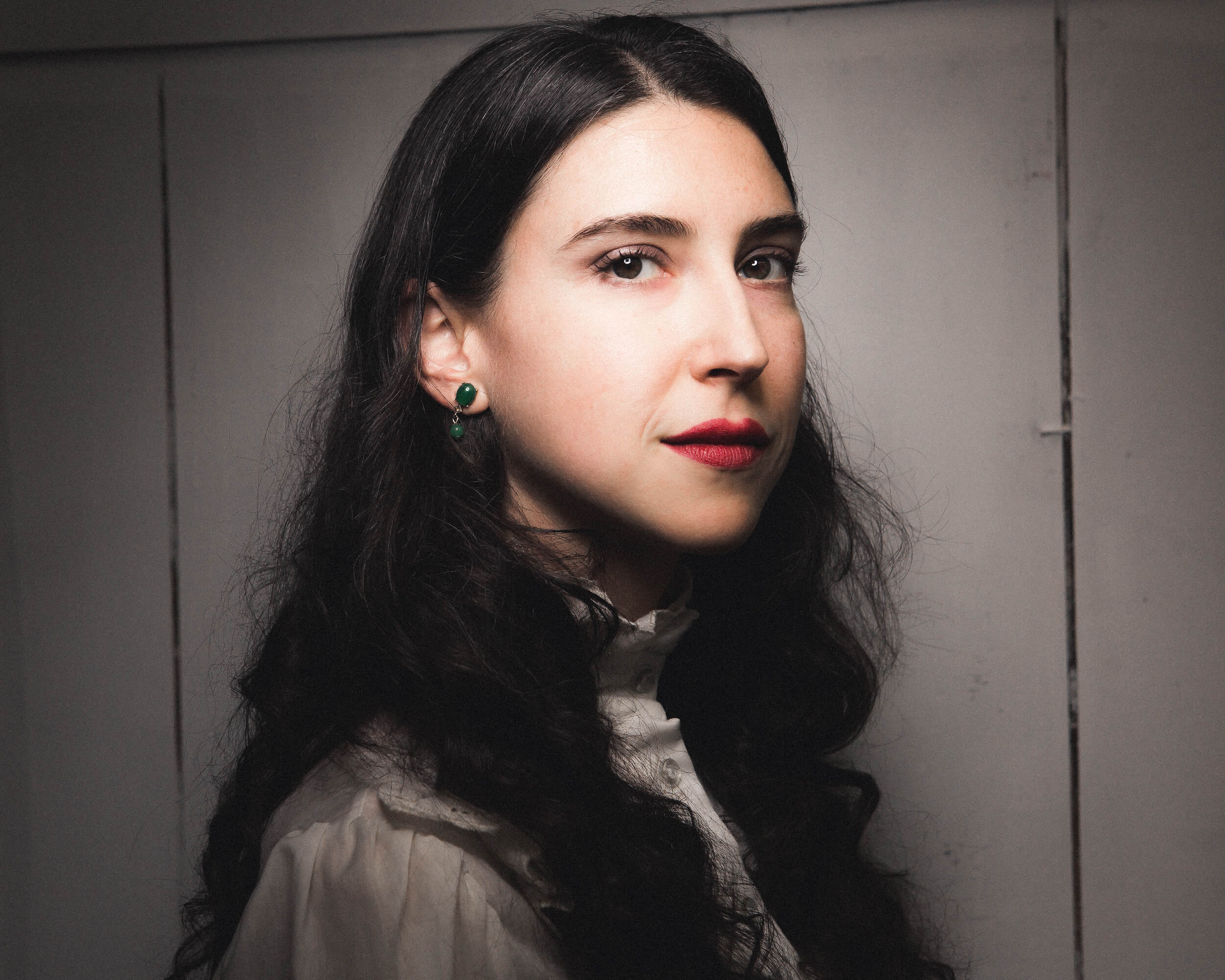 Midwestern Gothic staffer Marisa Frey talked with author Kathleen Rooney about her book Lillian Boxfish Takes a Walk, changing the world through writing, balancing fact and fiction, and more.
Midwestern Gothic staffer Marisa Frey talked with author Kathleen Rooney about her book Lillian Boxfish Takes a Walk, changing the world through writing, balancing fact and fiction, and more.
**
Marisa Frey: What’s your connection to the Midwest?
Kathleen Rooney: I grew up in the Chicago suburb of Woodridge, Illinois and went to high school at Downers Grove North. As a kid, I couldn’t stand the suburbs (still can’t) and couldn’t wait to move to the actual city someday. Since 2007 (after quite a bit of moving around), I’ve been living the dream. Martin and I have resided in the far north side neighborhood of Edgewater in Chicago for a little over 10 years now, and living in the city itself is every bit as marvelous as my kidself thought it would be.
MF: Lillian Boxfish Takes a Walk takes place in one day—New Year’s Eve of 1984—but is interspersed with scenes from the past. Why did you choose this structure?
KR: Because Lillian is based on Margaret Fishback, the real life highest paid female advertising copywriter in the United States in the 1930s, I needed to find a way to help myself move from the facts of her life and into the realm of fiction. Fishback’s own life and work are fascinating (I wrote an essay about her and helped get some of her light verse on the Poetry Foundation website here, if you’re interested) and I wanted my character of Lillian to be equally so. The key that let me unlock the novel was to give her not just an illustrious past but a really long and incident-filled 10-plus-mile walk across the city she’s known and adored for close to six decades. St Martin’s, my publisher, put the map of her walk on the inside covers, so you could take her walk yourself if you were so inclined.
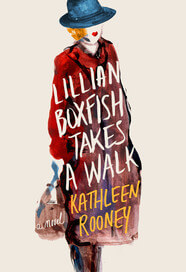
MF: Lillian Boxfish is loosely based on Margaret Fishback, a poet and the highest-paid female copywriter of the 1930s. How did she come to be the inspiration for the book?
KR: My high school best friend, Angela, was doing an internship at Duke University for her library sciences degree, and she got to help process the Fishback papers when her son donated them to the Hartman Center for Sales, Advertising & Marketing History. Angela is an amazing person and wonderful friend, so she knew that I’d be intrigued by Fishback’s life and work—her proto-feminism, her pursuit of both a career and a family, her serious publication record as a poet, and on and on. Thanks to her, I was able to learn about, apply for, and receive a travel-to-collections grant to be the first non-archivist to work with Fishback’s materials back in 2007. I was immediately smitten with Fishback and knew I wanted to do something with her story, but it took me a while to realize that it would be a novel.
MF: Several of your works—notably Lillian Boxfish and O, Democracy!—are based on real people or events. How do you balance fact and fiction?
KR: Research is inevitably one of my favorite phases of a project because everything at that point is potential energy–you haven’t started really writing yet so you haven’t started making mistakes. For that reason, I could happily dwell in the realm of research indefinitely, but of course that’s no way to get a book written. So when I move from research into writing, I try to be sure that I’ve given myself enough of a plot and enough of a compelling set of characters to sustain the narrative–and hopefully the reader’s interest–beyond the perhaps initially intriguing notion that it’s “based on a true story.” If a novel is too faithfully adherent to the facts of whatever really happened in its real life inspiration, then it probably won’t have the depth of character, the psychological realism, or the plot momentum to keep people reading. You need to give yourself the space to get imaginative and make stuff up, rather than merely novelizing actual events.
MF: What role does this kind of fact-based fiction play in our current cultural environment?
KR: Fiction that’s based on fact ideally calls attention to the fictional aspects of all the things we are encouraged to consider “true.” History, as the cliche goes, is written by the victors, and so good fact-based fiction can offer differing accounts of events that we may think we already know a great deal about. And the fact that fiction has a clear and artificial (albeit hopefully convincing) point of view can in turn emphasize that everything has a point of view–a perspective, an agenda, however you want to put it–and can invite readers to see even real life more complexly.
MF: As a poet, fiction writer, and nonfiction writer, how do you choose what medium to approach a subject with? How do the writing processes differ for you?
KR: Every project needs to find its own best form–you can say things in a poem that you can’t in a novel and vice versa. So I usually know before I even begin writing what genre something is going to be in because form is such a determining factor for content.
And that’s part of why Abby Beckel and I founded Rose Metal Press back in 2006. Our work as editors there has deepened our appreciation of the fact that these genres aren’t really stable and distinct anyway, and that the ones we normally identify are not remotely exhaustive in their description of the forms that creative work can take.
MF: You’re a former U.S. Senate aide—how does having worked in politics shape your approach to writing?
KR: My development as a writer ran in a simultaneous parallel track to my work in Dick Durbin’s office, and I was writing and publishing creatively in the same years as I was working, for instance, as a member of his communications team. (When my memoir Live Nude Girl came out in 2009, they held my job for me while I went on a book tour.) The kind of writing that I was doing in my role as a Senate Aide–speaking as or on behalf of someone else–is vastly different from the creative writing I was doing then and that I do now. Aside from employing basic English language mechanics, the two really did not resemble each other at all.
MF: You’ve said in a previous interview with Chicago Magazine that people can change the world, but not through politics. Do you think people can change the world through writing?
KR: To clarify, I said that people can’t change the world through the politics industry — e.g. working inside a senator or other elected official’s office — because the primary objective in such a situation, especially for a low-level staffer, like I was, is to keep your head down and do what you’re told. Specifically, I said that “Idealists are cannon fodder of the political industry. People most committed to making a positive difference are exploited the most. People who do rise are interested in consolidating their own power.” I think that people can absolutely change the world through politics if by that we mean being politically active–voting, marching, protesting, calling one’s representatives, canvassing and so on and so forth; I believe that being an informed and participatory citizen is part of politics and that you can change the world that way without a doubt.
Writing can change the world, too, yes, for better or for worse. Good writing, hopefully, helps readers develop their sense of empathy for people unlike themselves and for people facing complex moral and ethical situations. But then again, The Art of the Deal came out in 1987 and helped make Trump a household name, and now we’ve got a racist, misogynistic, xenophobic malignant narcissist in the White House and that happened in part because journalist Tony Schwartz helped him write that book.
MF: What’s next for you?
KR: I’m closing in on finishing a World War I novel, which is based on a couple of real-life figures. And I have another novel that’s set in 2016 about a couple of eerie and precocious tween girls in the Quad Cities. Stay tuned.
**
Kathleen Rooney is a founding editor of Rose Metal Press, a publisher of literary work in hybrid genres, and a founding member of Poems While You Wait. Co-editor of The Selected Writings of René Magritte, forthcoming from Alma Books in the UK and University of Minnesota Press in the U.S. next year, she is also the author of eight books of poetry, nonfiction, and fiction, including, most recently, the novels Lillian Boxfish Takes a Walk (St. Martin’s Press, 2017), O, Democracy! (2014) and the novel in poems Robinson Alone (2012). With Elisa Gabbert, she is the author of the poetry collection That Tiny Insane Voluptuousness (Otoliths, 2008) and the chapbook The Kind of Beauty That Has Nowhere to Go (Hyacinth Girl, 2013). Her essays and criticism have appeared or are forthcoming in Allure, The Rumpus, The Chicago Tribune, The New York Times Magazine, Salon, the Poetry Foundation website, and elsewhere. She lives in Chicago with her husband, the writer Martin Seay, and teaches at DePaul University. Follow @KathleenMRooney
November 10th, 2017 |
 Midwestern Gothic staffer Meghan Chou talked with author Nick White about his book How to Survive a Summer, exploring nontraditional queer spaces, outsmarting the hurdles to keep writing, and more.
Midwestern Gothic staffer Meghan Chou talked with author Nick White about his book How to Survive a Summer, exploring nontraditional queer spaces, outsmarting the hurdles to keep writing, and more.
**
MC: What’s your connection to the Midwest?
Nick White: I’ve called the Midwest home for most of my twenties. I moved to Ohio when I was twenty-three because I had been accepted into Ohio State’s MFA program. After I graduated, I went on to the University of Nebraska to earn a Ph.D.—technically, Nebraska is considered the Great Plains, but I always thought of it as further adventures in “the Middle West.” During my last year, I was offered the teaching job back at Ohio State, which I gladly accepted. The Midwest has become my home.
MC: Will Dillard, the main character in How to Survive a Summer, is a graduate student from the Midwest who reflects on his traumatic memories at a teenage gay-to-straight conversion camp in Mississippi. Between the South and the Midwest, what regional differences did you explore in How to Survive a Summer with regards to the attitude towards queer youth?
NW: I wanted to set the book in the Midwest and in the South—primarily because both spaces have been home to me, a gay man of a particular age, and because both seem to be unpopular locales to set queer dramas. I think there was this assumption—which is slowly being chipped away at—that if you are gay and from a small town or rural area, then your best bet for a happy life is to get thee to a metropolis. While this migration to urban centers can certainly be beneficial to many of us in the queer community, there are others, myself included, that love living in a small town, or in what people refer to as “flyover country.” I find it exciting to explore queerness in places and spaces that have traditionally been seen as not having room for it.
As far as attitudes toward queerness, the Midwest and the South have some differences. Living in Nebraska, Ohio, and Mississippi, I have spent most of my life in red states. But I never came out while I was in Mississippi—I am not sure if that is because of the place, itself, or because of my proximity to my family, who are very religious and conservative. Either way, I felt safer in Columbus—safe enough, at least, to start facing up to questions I had long since tried to ignore.
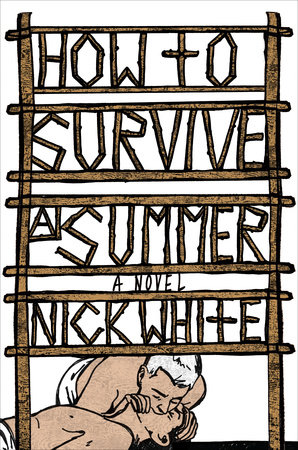
MC: Many gay-to-straight conversion camps follow the misguided notion that one can “pray away the gay.” In addition to this aspect, what role does religion play in the telling of Will Dillard’s story and in understanding the cultural differences between the Deep South and Midwest?
NW: The South is home to many evangelical churches, particularly the Baptist Church, which played a huge role in my growth and development. In the book, Will’s journey to Camp Levi, the conversion camp, is one that both he and his father see as a necessary step for him. They are both true believers, as I once was. They believe they know the Gospel and want to do what is “right.” Will is not sent to Camp Levi because his father doesn’t love him; on the contrary, Rev. Dillard loves his son a great deal and feels he is doing his best for him, and that’s what, in my mind, makes the decision to send one’s child to conversion therapy so complicated and fraught. When Mother Maude and Father Drake appear in town, asking for money to help jumpstart their camp, both father and son see this as nothing less than a sign from God. Mother Maude and Father Drake offer what both men have been seeking: deliverance.
MC: The release of a horror movie, called Proud Flesh, triggers Dillard’s search for closure. Proud Flesh draws inspiration from events that transpired at the Mississippi conversion camp, Camp Levi. The gay serial killer central to the movie wears a princess mask, which the gay community around the country begins to wear with pride. Why did you choose a princess mask as the symbol of terror and solidarity?
NW: I think I wanted to illustrate, in some way, the resiliency of queer culture, how many in our community can take something that is deemed offensive (such as this princess mask, or even the word “queer”) and reclaim and repurpose it.
MC: Why did people react to Proud Flesh with pride and not offense? In other words, what about the horror movie brought about feelings of solidarity?
NW: Well, at first, the movie caused much offense, and I don’t know that Bevy ever bought the reinterpretation. I’m not sure that many people reacted with pride, either. When Will and the others see the movie in Memphis, the audience boos at the end. I think the movie becomes, at best, a mild curiosity—something to see with people and cheer and jeer. There’s a campiness to it that many find appealing, a kind of “it’s so bad that it’s good” response.
I tried to be very careful that the book didn’t come down one way or another on it. I wanted the movie to be one of those enduring mysteries that the reader will still ponder about once she has finished reading.
MC: Will’s family appears progressive in some ways—his father is forward-thinking on the topic of race, his mother lived in an all-female woodland community—yet neither can accept their son’s sexuality. How does the portrayal of Will’s parents shed light on the homophobia towards and mistreatment of queer youth?
NW: I didn’t want the parents, particularly the father, to be two-dimensional, flat. I wanted to show him to be a thoughtful and conflicted man. He was very naïve about the depth and breadth of racism in his community, just as he was about his son’s sexuality. I wanted to show that, as the years passed, the father had the capacity to grow and, what’s perhaps the hardest thing for people to do, change his mind. He may never be comfortable with his son’s queerness, but he is determined to stay in his life, no matter what.
MC: What is one piece of advice you give your students at Ohio State University about writing?
NW: Respect the work. What I mean by this is, I think, make sure you remember that the putting of the words onto paper, then revising the hell out of it, is all that matters. There’s so much in our world that wants to keep us from writing, and half the battle, I think, is finding out ways to outsmart the hurdles and get back to the desk. Do it. Do it as much as you can, for as long as you can. Then, once you’re finished with that project, move along to the next one. Don’t look back.
MC: What’s next for you?
NW: I am finishing up a story collection with should be out soon with Penguin, and dabbling with a new novel.
**
A native of Mississippi, Nick White currently teaches creative writing at the Ohio State University. His fiction can be found in The Kenyon Review, Guernica, The Literary Review, Indiana Review, Day One, and elsewhere. His debut novel, How to Survive a Summer, was published by Blue Rider Press, an imprint of Penguin-Random House.
November 9th, 2017 |
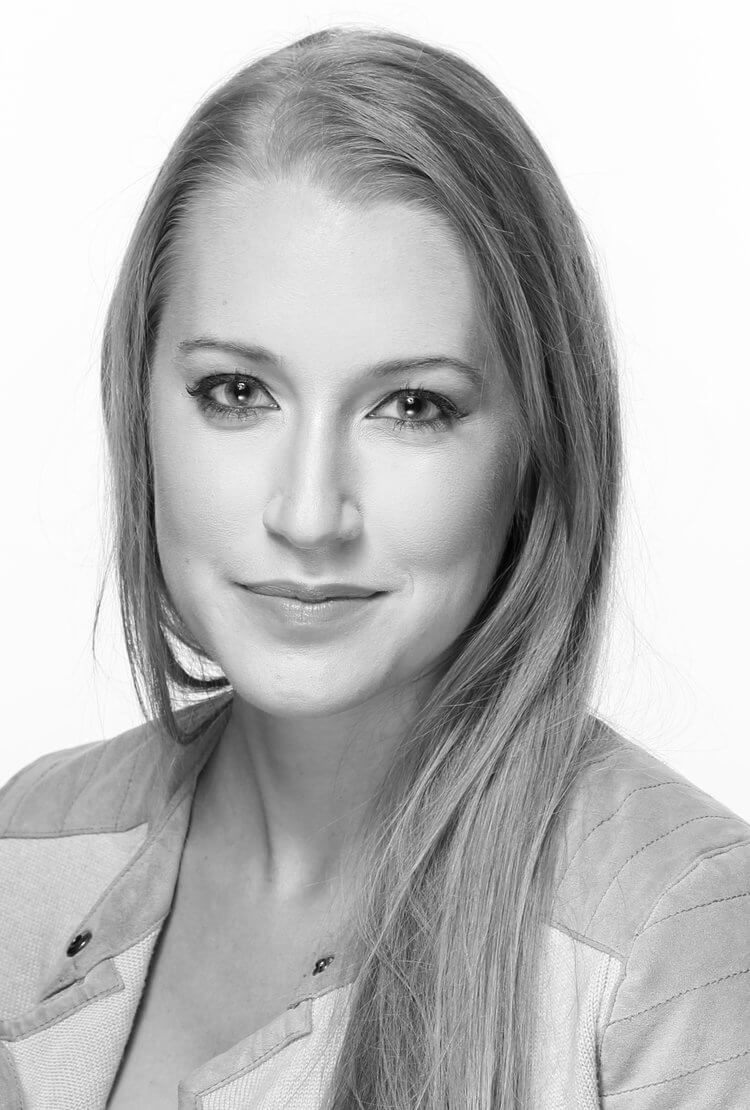 Midwestern Gothic staffer Meghan Chou talked with author Kristen Radtke about her book Imagine Wanting Only This, visiting ruins around the globe, the unique genre of graphic memoir, and more.
Midwestern Gothic staffer Meghan Chou talked with author Kristen Radtke about her book Imagine Wanting Only This, visiting ruins around the globe, the unique genre of graphic memoir, and more.
**
Meghan Chou: What’s your connection to the Midwest?
Kristen Radtke: I grew up in Wisconsin, went to college in Chicago, and went to grad school in Iowa. I’ve spent a lot of time in the Midwest.
MC: Imagine Wanting Only This tells the story of your travels to visit the ruins of places around the world from the killing fields of Cambodia to the empty streets of Burma. Along the way, you stopped by Gary, Indiana — a boom-bust city that is nearly abandoned. What did you hope to convey about the lives of the Midwesterners near Gary, Indiana, and what sort of lessons did you learn from exploring those ruins?
KR: This is a tough question. I didn’t set out to convey much—or anything—about the lives of Midwesterners near Gary. My experience there was so limited—I went there as a college student and had no understanding of the city’s past or present economy or challenges. I wandered through the town like a tourist looking for experiences I could grab for myself. I was 19, and I didn’t understand yet how flawed and wrong that was. I can’t honestly say I learned anything from exploring the ruins or the town. That learning came years later, in retrospect.
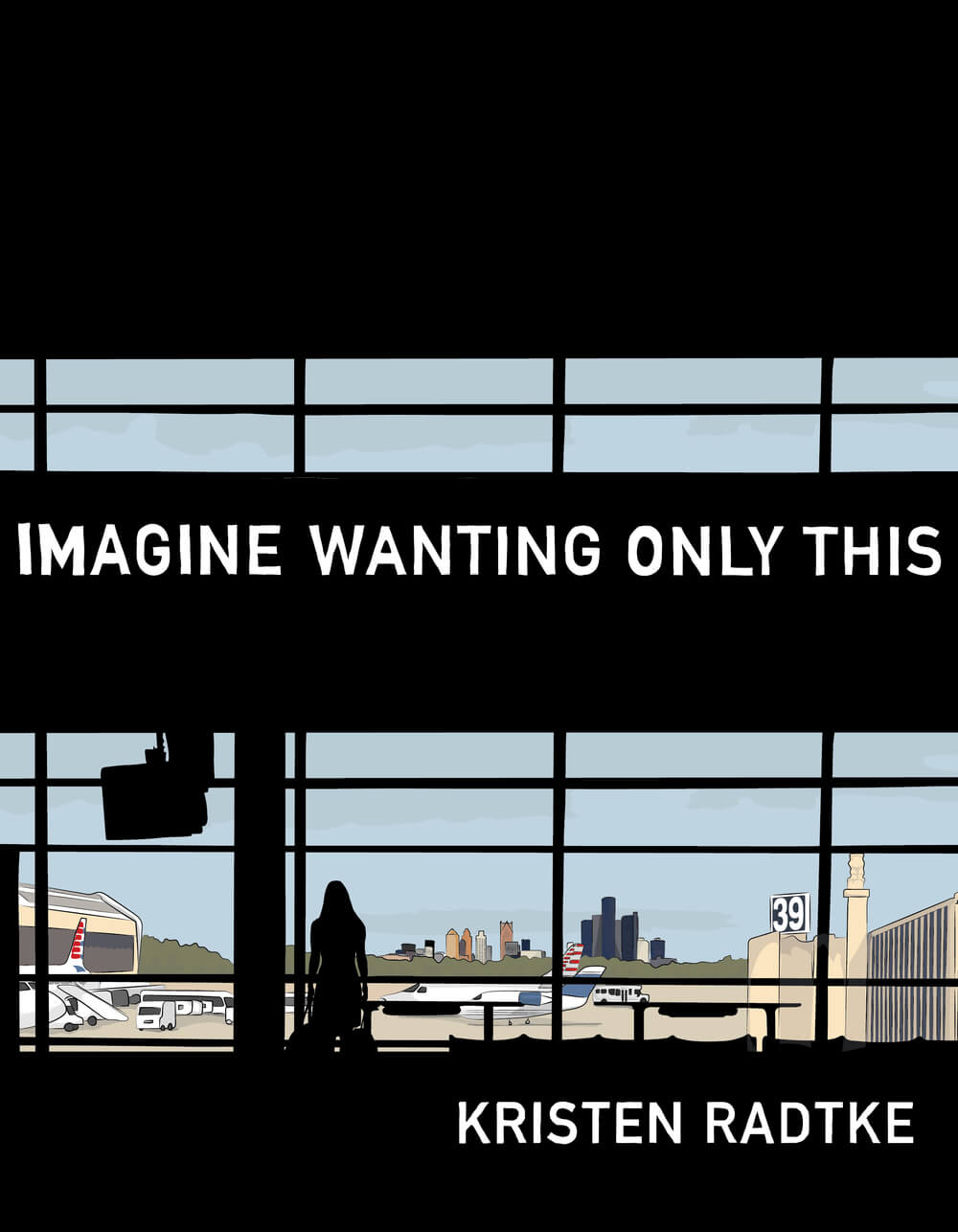
MC: What was your motivation for going on this worldly adventure? What were you searching for?
KR: Restlessness? Boredom? Being young? I’m not sure. The world is big, I want to see it.
MC: You researched and wrote Imagine Wanting Only This after the death of your uncle. Over the course of your travels and creating the book, how did your understanding of why we are here, and what we leave behind change?
KR: If it did change, it just became more complicated.
MC: Imagine Wanting Only This falls in the unique genre of graphic memoir. How do drawings enhance and add another dimension to the story?
KR: Images are just another entrance point into the work. I think the book could have been written in straight prose, too, but this is just the medium and form that made the most sense to me.
MC: The artwork in Imagine Wanting Only This is entirely black and white. Why did you choose to use only black and white illustrations throughout rather than color? Was this a metaphor for grief?
KR: It wasn’t. Can I claim that it was? Black and white just made sense to me for this project—I can’t say that it was a conscious choice at all.
MC: When creating this graphic memoir, in what order did you formulate the many elements such as the plot, dialogue, and drawings?
KR: I often start with a script, but I try to move back-and-forth between text and image as fluidly as possible. Once I’m deep into a project, they start working in tandem, and the ideas start coming to me in both mediums at once.
MC: What’s next for you?
KR: I’m working on an essay collection about loneliness and a graphic novel. I like working on more than one thing at once. When you’re stuck with one you can move to the other.
**
Kristen Radtke is the author of the graphic nonfiction book Imagine Wanting Only This (Pantheon, 2017). She is the art director and New York editor of The Believer magazine. Find her on Twitter @kristenradtke.
November 5th, 2017 |
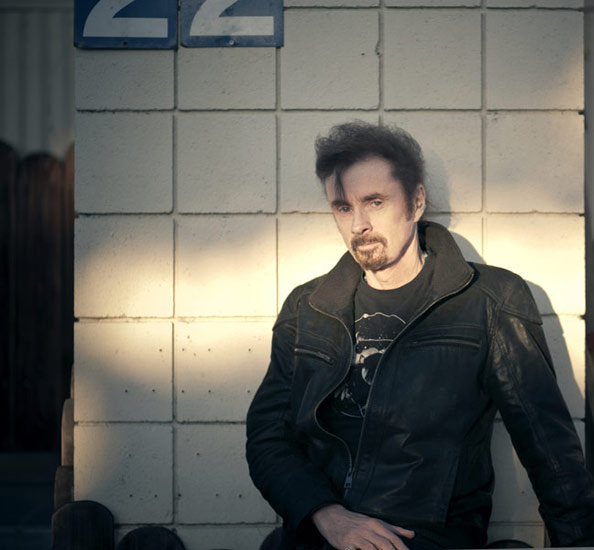
Photo credit: Jamieson Fry
Midwestern Gothic staffer Meghan Chou talked with author T. C. Boyle about his book The Terranauts, climate change, reality TV, and more.
**
Meghan Chou: What’s your connection to the Midwest?
T. C. Boyle: I discovered it on Route 80 after crossing the Hudson for the first time in my life. I was twenty-five at the time, with a girlfriend, a dog and two cats. We settled in Iowa City for five and a half years, where I earned my M.F.A. and Ph.D. degrees.
MC: How did your time in Iowa at the University of Iowa and Iowa Writers’ Workshop influence you as a writer?
TCB: While I haven’t written much about my time there, it was formative. Not only were the bars and music scene lively beyond compare (Duck’s Breath Mystery Theatre was doing its thing at Gabe & Walker’s then), but the intellectual ferment just began to produce a fine ripe old vintage deep inside me. I saw most of my heroes onstage—Lenny Michaels, Kurt Vonnegut, William Styron, Ray Carver, Stanley Elkin, Grace Paley and a hundred others—and plunged deep into the literature of the nineteenth century. See my essay, “This Monkey, My Back,” and, more recently, my short story, “The Night of the Satellite” for the flavor of Iowa.
MC: In The Terranauts, a group of individuals agree to live in a contained biodome in Arizona. E2, the nickname for this isolated dome, is a social and scientific experiment, testing alternative habitats should the climate change problem escalate. What real-world experiments did you draw inspiration from for The Terranauts?
TCB: The Terranauts jumps off from the actual Biosphere II experiment of the early 1990s. It was meant to last one hundred years, but only made it through two and a half. That’s where I stepped in.
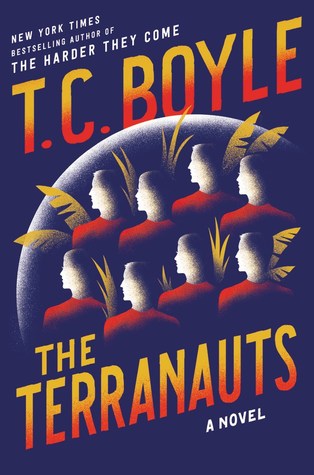
MC: What message does The Terranauts convey about how we as a world and country should approach climate change?
TCB: The message is for the reader to interpret. Novelists do not explain; they entertain and provoke. That said, I like what Elizabeth Kolbert had to say about the latest Mars venture—that is, while it is all but impossible to recreate a self-sustaining environment that has had millions of years to evolve, it shouldn’t be quite as hard to pay more attention to the one that sustains us.
MC: The inhabitants of E2, deemed the Terranauts, follow the motto, “Nothing in, nothing out.” How is this theme echoed throughout different aspects of the book and in the real world with regard to climate change?
TCB: Obviously E2 is a microcosmic world. Our water can take years to percolate through the ground and wind up in our glasses; in E2, it takes days. Similarly, no artificial scents or products were allowed inside, because the Terranauts would be absorbing them in their tender cells much more quickly than that process happens out here.
MC: Not only does the omniscient Mission Control observe the inhabitants of E2, but cameras also broadcast their daily activities to the greater public. How does this constant surveillance and high-profile publicity affect the behavior of the characters in E2 and the way you chose to examine human nature?
TCB: In some ways, Biosphere II was the original reality TV show. I exaggerated Mission Control’s oversight for my own purposes. Big Brother, indeed. Hello, God!
MC: This constant surveillance and the public’s obsession with the happenings of E2 sounds similar to the setup of some reality television shows. What truths did you want to bring to light about the business and attraction of reality television?
TCB: Again, we must leave interpretive questions for the audience. I do find it interesting that the scenarios I’ve written about in the past are now codified as reality TV (see “Peep Hall” and the naked-in-nature section of my global-warming novel, A Friend of the Earth).
MC: Three characters narrate The Terranauts: Dawn Chapman, an environmental scientist; Ramsay Roothorp, a flirt; Linda Ryu, a candidate not selected for the mission. What perspective does each narrator bring to the story? How do you, as a writer, decide how many narrators are needed to best tell a story?
TCB: I am always trying to do something different with any given narrative. In this case, I have experimented with three first-person narrators. If the experiment works, I believe it brings great intimacy to the narrative—each character is essentially soliloquizing to the reader and each has a very different perspective from those of his colleagues.
MC: What’s next for you?
TCB: My new collection, The Relive Box and Other Stories, hatches in October. I am two-thirds of the way through the next novel, which I hope to finish by the end of the year. Since it is about the early days of LSD, I am hoping my publisher will include a tab of blotter acid on the title page of each copy.
**
T. Coraghessan Boyle is the author of twenty-six books of fiction, including, most recently, After the Plague (2001), Drop City (2003), The Inner Circle (2004), Tooth and Claw (2005), The Human Fly (2005), Talk Talk (2006), The Women (2009), Wild Child (2010), When the Killing’s Done (2011), San Miguel (2012), T.C. Boyle Stories II (2013), The Harder They Come (2015) and The Terranauts (2016). He received a Ph.D. degree in Nineteenth Century British Literature from the University of Iowa in 1977, his M.F.A. from the University of Iowa Writers’ Workshop in 1974, and his B.A. in English and History from SUNY Potsdam in 1968. He has been a member of the English Department at the University of Southern California since 1978, where he is Distinguished Professor of English. His work has been translated into more than two dozen foreign languages, including German, French, Italian, Dutch, Portuguese, Spanish, Russian, Hebrew, Korean, Japanese, Danish, Swedish, Norwegian, Lithuanian, Latvian, Polish, Hungarian, Bulgarian, Finnish, Farsi, Croatian, Turkish, Albanian, Vietnamese, Serbian and Slovene. His stories have appeared in most of the major American magazines, including The New Yorker, Harper’s, Esquire, The Atlantic Monthly, Playboy, The Paris Review, GQ, Antaeus, Granta and McSweeney’s, and he has been the recipient of a number of literary awards, including the PEN/Faulkner Prize for best novel of the year (World’s End, 1988); the PEN/Malamud Prize in the short story (T.C. Boyle Stories, 1999); and the Prix Médicis Étranger for best foreign novel in France (The Tortilla Curtain, 1997). He currently lives near Santa Barbara with his wife and three children.
November 2nd, 2017 |
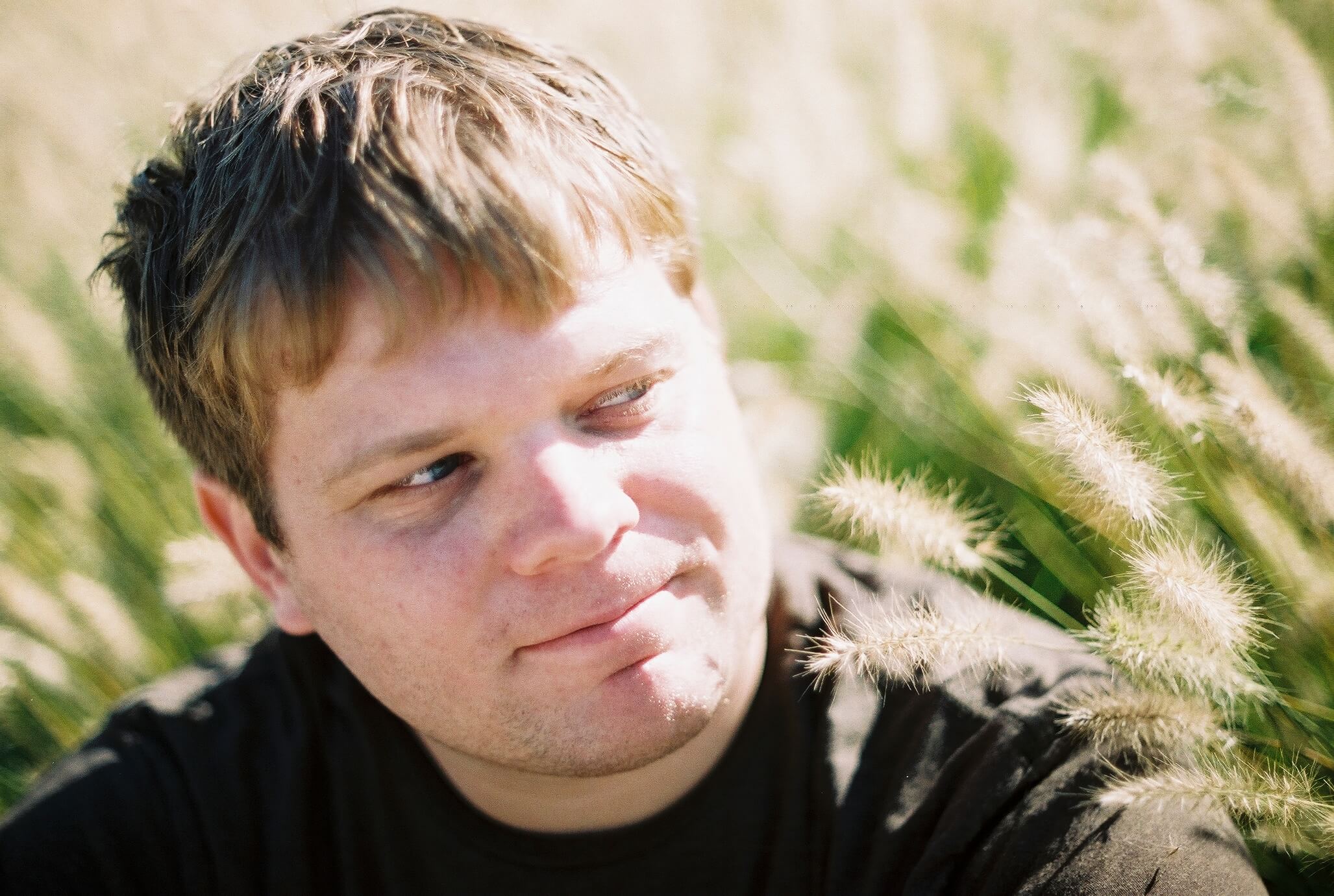 Midwestern Gothic staffer Sydney Cohen talked with author Theodore Wheeler about his debut novel, Kings of Broken Things, the advantages of youthful perspective, tackling the challenge of writing a novel, and more.
Midwestern Gothic staffer Sydney Cohen talked with author Theodore Wheeler about his debut novel, Kings of Broken Things, the advantages of youthful perspective, tackling the challenge of writing a novel, and more.
**
SC: What’s your connection to the Midwest?
TW: I was born in Iowa and have lived my entire life between that state and Nebraska—mostly in Nebraska. Along the way I’ve lived in a small town (pop. 1500), a college town, and for the last twelve years in the prairie metropolis of Omaha.
SC: Your debut novel, Kings of Broken Things, is a historical fiction piece set in the tumultuous Red Summer of 1919. The novel focuses specifically on the Omaha race riot of 1919 and discusses themes of racial violence, nationalism, and immigration. Almost 100 years later, these themes are still salient in the American sociopolitical landscape. How, if at all, was your exploration of the tensions in 1919 influenced by contemporary instances of race riots and political unrest? How does your novel offer historical perspective on these issues?
TW: Kings of Broken Things was influenced a lot by the current troubles, though mostly in nuanced ways, the most significant being how perspective functions in the novel. When I started working on the novel, Obama had just been elected and there was a lot of discussion about the post-racial age we’d begun. Of course, our days of supposed racial harmony didn’t last long. I worked on the book from 2008 to around 2015, to give a frame of reference. The first drafts focused mostly on how anger and prejudice were directed at German-Americans in the Midwest at the beginning of World War I, as the Tea Party movement was ascendant and the anti-immigrant Minutemen vigilante group was very active. That mantle, Minutemen, has been taken by numerous anti-immigrant groups over the last century, so it was interesting to think about the phenomenon while trying to tie together anti-German sentiment during WWI to anti-immigrant movements now—though that didn’t really hold together as much as I thought it would.
When police killings, race riots, and the BLM movement became prominent while I was working on Kings, I felt it became incumbent on all of us to think about our complicity in this system, so that spurred a lot of changes in what the novel focuses on, after being compelled to think about privilege and personal freedom in uncomfortable ways. The main thing was to stop viewing my main characters as these precious figures who were incapable of committing horrid acts. The race riot and lynching of Will Brown comes at the end of the novel, but it never really felt like the story was done well until I put some of my main characters (in particular, Karel Miihlstein, a teenage boy who was displaced from Austria by the war) right in the midst of the riot and lynching.
Since the book has been out, a few readers have told me they were unsettled by the story because they didn’t know who the “good guys” are, or were caught off guard when a character who they saw as the “hero” of the book did something unforgivable. The point is to unsettle, so hopefully the story helps give perspective on these issues along these lines.
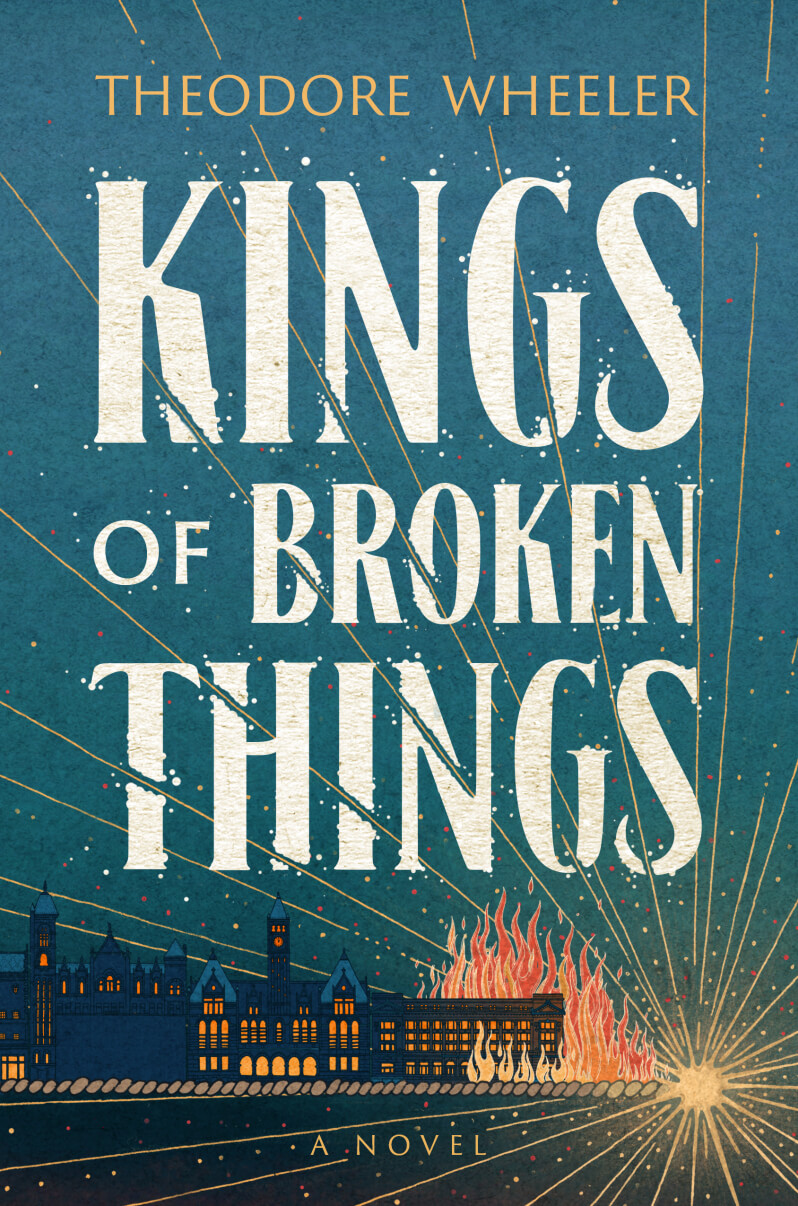
SC: Interestingly, you approach the context of your story through the point of view of three young men and women. How does youth offer a unique space in which to explore morality and identity? How would your novel be different if the protagonists were adults?
TW: Oh, good question. In some ways a youthful perspective feels more natural and is more easily consumed because identity is more fluid in children and young adults, and their metamorphoses maybe a little more poignant. Showing young people being corrupted has a little more teeth than showing adults losing their way, like how we see the Eden myth playing out over the course of our early lives, that we all experience a fall at some point.
More specific to the plot, the mob that lynched Will Brown began when a group of teenage boys marched to the courthouse and demanded that he be handed over to them, and many boys were party to the raids that eventually got to Will Brown. Knowing what was coming at the end of the novel, it allowed me to play around with good-old-boy and sowing-wild-oats rituals that invoke more traditional ideas of maturing and juxtapose that with the riot and lynching.
SC: Evie, the only female protagonist, is a kept woman indebted to her male keeper. This concept is both old fashioned and largely prominent today in the form of human trafficking. How did you go about depicting the female condition? What was your purpose in writing Evie’s narrative and how does her experience fit into the larger story?
TW: At the time the story takes place, women had a limited place in society, of course, but there was a lot going on to change that during these years. The 19th Amendment was ratified in 1920 and Progressive Era advances were largely powered by women like Jane Addams, Ida Tarbell, and Ida B. Wells. The headway Evie Chambers makes in the book toward controlling her own destiny is representative of this in some ways. Ruth Rosen’s The Lost Sisterhood: Prostitution in America, 1900-1918, Josie Washburn’s The Underworld Sewer, Jessie Redmon Fauset’s Plum Bun, and Willa Cather’s Nebraska novels were invaluable while depicting Evie. In particular, I was interested in how fallen women were able to rise in society at the time, even though it was rare, as part of a broader preoccupation over who gets to move on after the riot and who doesn’t. Starting from when she’s a teenager, Evie’s life is about gaining will to power with the intention that she will someday have economic freedom and freedom of movement. Everything she does (down to presenting herself as a flighty waif) is actually very practical.
SC: What interests you specifically about the geographical-political intersection of race relations in the Midwest? How does Omaha in 1919 contradict or reinforce your personal relationship with and ideas about the city?
TW: It surprises a lot of people to learn that Omaha has a long history of race troubles, including efforts to drive out Irish and Greek populations that go back to the city’s founding, through several riots in the 1960s and continuing issues with police and lack of economic opportunity today in the traditional African-American neighborhoods on the north side. It’s no secret that Omaha has been the most dangerous city to be black over the last decade, but it’s not something to be talked about in polite company here, and Omaha doesn’t have enough national prominence to matter on a bigger scale. These pervasive, macro issues don’t get a lot of play unless a riot breaks out.
As far as personal relationship with the city and these issues, it goes back to the idea of being complicit in the system. Though I’m not a bad person, you can trust me, I do enjoy my privilege and the spoils that go along with that. A lot of my interest while writing the book—beyond learning the history itself in a deep, meaningful way—was the idea that many people who live in Omaha now have a family connection to the race riot in 1919, whether they’re aware of it or not. This suspicion has borne out in these two months since Kings of Broken Things was released, as there’s usually somebody who steps forward at the end of an event to tell me about their uncle or great-grandparent who participated in the riot in some capacity. Not that I’m walking around the city staring at people and wondering what their ancestors were up to in 1919. Well, I guess that’s kind of what I have been doing after all.
SC: While you have a rich repertoire of successfully published short story fiction, Kings of Broken Things is your first full-length project. How was the process of writing a novel different from writing short stories? What surprised or challenged you about this process?
TW: Not to sound too simplistic, but the main challenge is that novels are a lot bigger. My typical process with a short story is to work from an idea (usually some inciting conflict, a bit of dialogue, or abstract idea) and pound out a first draft over a week or two, then agonize over the key scenes for a few weeks until a voice is established, then rewrite the story in that voice and perspective. It’s pretty succinct, I think, for process, and while it’s somewhat similar for how I write a novel, a part that might demand a couple weeks for a short story demands about a year when it comes to a novel. As an example, it took me about five years of tinkering to figure out what perspective my novel should be told from. There’s an astonishing number of variables that have to be held in one brain to pull a novel together, and constantly that mental process is being assailed and distracted. The surprising thing is how enjoyable tackling this challenge is, once I get over my nerves about being able to finish a book, getting it published, not wasting my life, etc. There are few things more satisfying than tackling that challenge and coming out on the other side with a solution.
SC: In describing your award-winning collection of short stories, you write “the herd can’t always outpace the predator.” What does this mean in the context of the themes present in the book, including domesticity, family, and the human condition?
TW: I think my editor at QFP, Erin McKnight, actually wrote that, to be honest. It’s a nice thematic summation of the book, though, in how many of the characters are overwhelmed by their troubles—whether that’s childhood, illness, mortality, or even a rocky marriage or two. Like most characters in short stories, these are folks on the brink of change. The wolf is already amidst the sheep, so to speak. That’s also literally the case with Aaron Kleinhardt, who reappears throughout the collection to spread his misery and general unsavoriness.
SC: You also report a civil law and politics beat for a news group in Omaha. How has your journalistic knowledge and experience influenced your writing?
TW: I’ve learned solid research skills. My beat mostly involves checking court dockets, searching for a specific type of case, and tracking them down. I’m comfortable in archives now and had to develop the kind of interpersonal skills that appeal to bureaucrats—that is to say, being patient and trying to understand how to make the lives of clerks and librarians more pleasant, rather than just imposing my needs on them. Beyond that, reporting and fiction writing share a lot of the same challenges: finding compelling stories that people will actually read, being able to get at the heart of an issue and effectively communicating why that issue is meaningful. The form and style vary, but it’s all storytelling.
SC: Who are some writers you admire, and how does their work inspire your own?
TW: Specifically for this book, my big influences were Ralph Ellison, to see the politics of race and the eruption of a riot; Marilynne Robinson, for her depictions of quiet do-gooder Midwesterners trying to make small differences in the world; Don DeLillo, for his lyric to the Bronx, both the current one and one that’s disappeared; E.L. Doctorow, James Weldon Johnson, Theodore Dreiser, Willa Cather. Reading Uwe Johnson and Denis Johnson always recharge my batteries and challenge me to be a better writer than I am, mostly just because I love reading them so much. The possibility that somebody could love my work in that same way is intoxicating.
SC: What’s next for you?
TW: Earlier this summer I finished a first draft of a new novel that’s set in Omaha and Chicago in 2008 and deals with loss, family, and a sense that humanism has failed in the decade following the economic collapse, all narrated in the context of a post-9/11 domestic spying campaign. It’s been a challenge to combine some high-concept elements within the smaller drama of a domestic betrayal novel, but I feel like it’s coming together.
**
Theodore Wheeler is the author of the novel Kings of Broken Things and a collection of short fiction, Bad Faith. His work has appeared in Best New American Voices, Southern Review, Kenyon Review, Cincinnati Review, Boulevard, and Midwestern Gothic Issue 8, and has been recognized with an AWP Intro Journals Award, a Marianne Russo Award from Key West Literary Seminar, and a fellowship from Akademie Schloss Solitude. A graduate of the MFA program at Creighton University, he currently teaches writing at the University of Nebraska at Omaha.
October 27th, 2017 |
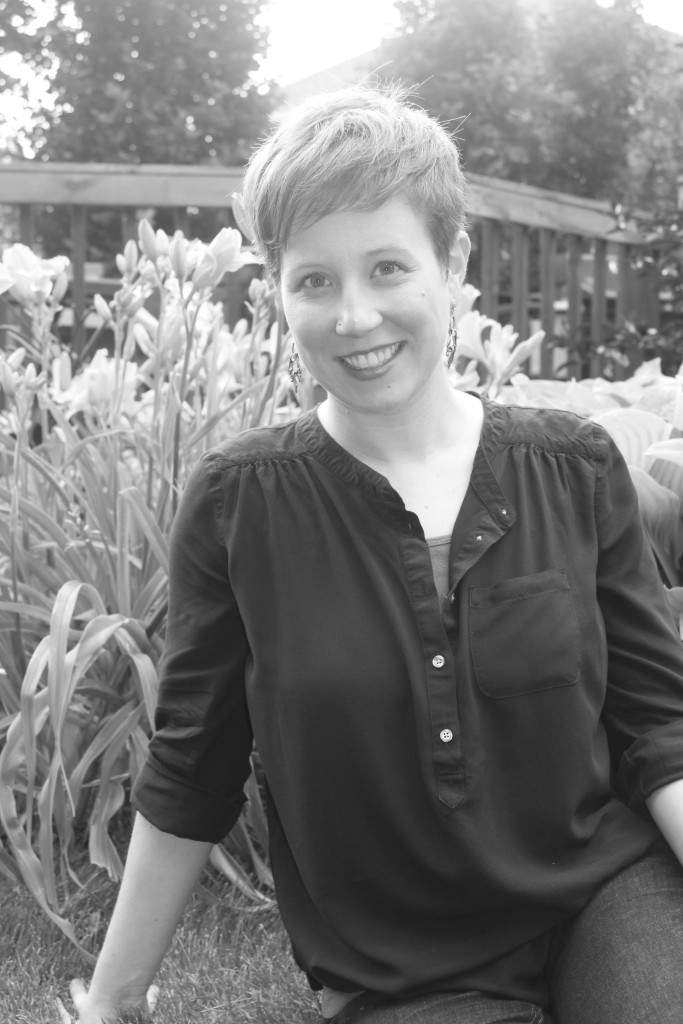 Midwestern Gothic staffer Megan Valley talked with author Callista Buchen about her poetry chapbook Double-Mouthed, making sense of motherhood, collaborative writing, and more.
Midwestern Gothic staffer Megan Valley talked with author Callista Buchen about her poetry chapbook Double-Mouthed, making sense of motherhood, collaborative writing, and more.
**
Megan Valley: What’s your connection to the Midwest?
Callista Buchen: The Midwest is woven into my experience of and view of the world. I’m originally from Wisconsin, and I’ve lived for long stretches in Ohio, Kansas, and Indiana (after a brief stint out west in Oregon). These are my people.
MV: How has teaching writing at Franklin College influenced how you approach your own writing?
CB: Teaching writing gives you the opportunity to talk about writing a lot—I’m constantly thinking about writing and how best to discuss it with my students, how I can help them find their way in this field. All this thinking helps me stay engaged with my own writing. After all, I’m a working writer honing her craft, just as they are. Plus, I love reading and responding to student work—they’re brilliant and challenging, and they keep me reaching to do better.
MV: What’s the most important piece of advice you have for your students?
CB: I tell my students to read and to think about what they read, and to do so with rigor and compassion.
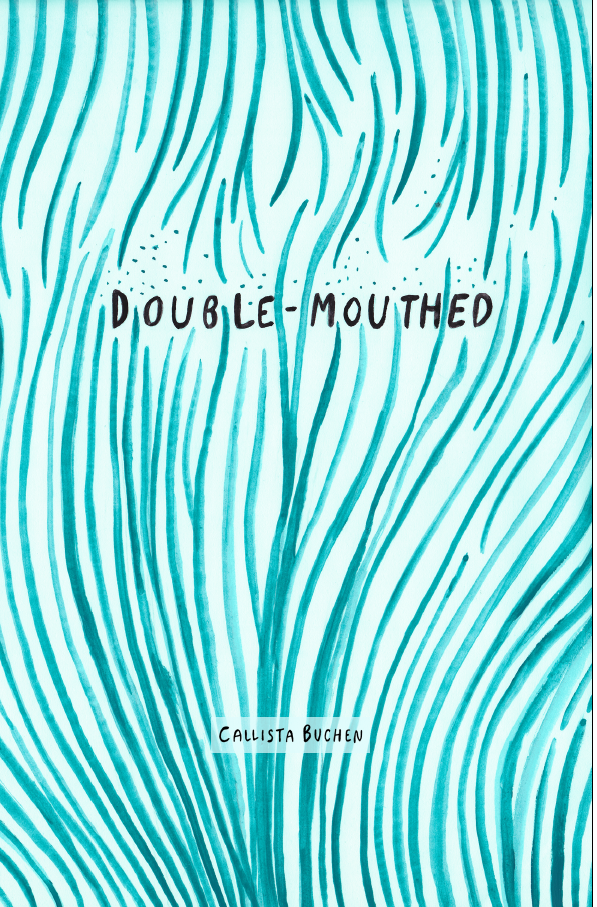
MV: Double-Mouthed, your collection of poetry, acknowledges the “collapse of the self that can accompany motherhood.” How does the title reflect that theme of destruction and rebuilding?
CB: This is a chapbook about what happened after I became a mother, and how that experience made me think in new ways about identity and selfhood, and the fragility of what I had once believed to be stable. The title reflects a kind of doubleness that is bound up in contemporary motherhood, this desire to be multi-faceted, what it means to be a mother and an individual and how to be both, and what it means to be a woman and an individual. It speaks to how women have access to/must rely on a kind of double-speak to function in a culture that reduces them, through motherhood (among other social constructions), to objects and containers. But, is also a nod toward women as mysterious and powerful, including the way the female body operates.
MV: Your collection also calls into question how a woman determines her sense of self. How has your perception of yourself changed throughout writing your book?
CB: I composed these poems as I was trying to make sense of this experience of becoming a mother. I’m several years removed now from that initial experience, and while I can recognize the woman I was before (I’d wave to her from across the street), I’m fundamentally different now, both in ways I appreciate and in ways I mourn. Writing the book was an elegiac project, a way to acknowledge the rapid changes in my life and in my relationships and in my body and even in my own understanding of myself, all of which culture pushes us to ignore. In writing poems to understand this, I was able to take more imaginative leaps, to consider wider questions of selfhood and determination, to explore what happens when what one believes is stable is destroyed and rebuilt. My perception has changed in that I recognize myself to be both more vulnerable and more powerful than I previously understood, and this is the paradox of the poems are most interested in.
MV: You frequently write with poet Amy Ash—why is collaboration important to you?
CB: I love working with Amy. Writing with her is good for my soul, both my writing-soul and my person-soul. When we write together, something freeing happens in the process and in the poem. We usually work by alternating lines or phrases, and we often leave one another in the middle of an idea, so I simply trust that Amy will know what to do. It is never what I expect or what I would do, which is wonderful. Our poems are constantly turning from line to line, in a way that is energizing and urgent. Yet, they are still whole (we don’t remember who wrote what and there aren’t two voices in our pieces). There is also intimacy in collaborating. Writing never happens in a vacuum, but the drafting and composing process is sometimes lonely. When I write with Amy, I have a partner, not just a soundboard or a reader, but a true partner. We’re in it together.
MV: Your last book, The Bloody Planet, takes readers on a tour of the solar system, while Double-Mouthed focuses much more closely on a “smaller,” but not less important topic. What is the connection between the two books?
CB: Both books are interested in relationships and relationality, how things and objects and people relate to one another—relationships between lovers, between parents and children, between one and one’s self, between a planet and its moons. The books are, perhaps, different sides of the same coin, with The Bloody Planet turning outward and to the sky to understand the relationships between bodies and the gravities between them, and Double-Mouthed turning inward, toward the universe inside a mother.
MV: How do you know when a poem is done?
CB: I go by feel. I’m looking for complete or contained but not closed. I want poems that have a power that spills past the last line more than I want the final word.
MV: What’s next for you?
CB: I’m putting the finishing touches on a longer manuscript that expands the themes introduced in Double-Mouthed, as well as working on chapbook and full-length manuscripts with Amy.
**
Callista Buchen is the author of poetry chapbooks The Bloody Planet (Black Lawrence Press, October 2015) and Double-Mouthed (dancing girl press, April 2016). She is the winner of DIAGRAM‘s essay contest and the Langston Hughes award, with work appearing in Harpur Palate, Fourteen Hills, Puerto del Sol, Salamander, Whiskey Island Review, and many other journals. She teaches writing at Franklin College in Indiana.
October 26th, 2017 |
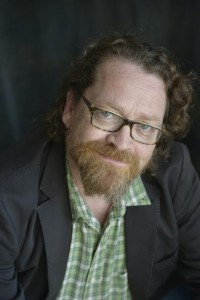 Midwestern Gothic staffer Meghan Chou talked with author Dan Chaon about his book Ill Will, writing from multiple perspectives, balancing suspense and tension, and more.
Midwestern Gothic staffer Meghan Chou talked with author Dan Chaon about his book Ill Will, writing from multiple perspectives, balancing suspense and tension, and more.
**
Meghan Chou: What’s your connection to the Midwest?
Dan Chaon: I grew up in Western Nebraska—in Sidney, just north of Sterling, Colorado, about a hundred miles east of Cheyenne, Wyoming. I went to undergrad at Northwestern, in Chicago. I have lived in Cleveland since 1990. So I have three very different ties, but all of them definitely a kind of “Midwestern.”
MC: Ill Will is set in the city of Cleveland, Ohio, where you currently reside. Why did you decide the Midwest was a valuable setting for your work?
DC: I’m not sure it’s a “decision,” honestly. I think as a writer I’m stuck with my landscape the same way I’m stuck with my eyes or my skin. But it’s definitely meshes with my work in a vital way, to the extent that I don’t think most of my stories could really be set anywhere else.
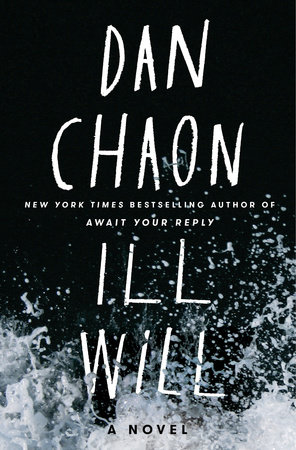
MC: Ill Will introduces us to Dustin Tillman, a psychologist in the suburbs of Cleveland. He says, at one point, “We are always telling a story to ourselves, about ourselves.” Do you create characters that reflect a part of your personal story or do you maintain a distance from your characters?
DC: Both, I think. Dustin is a lot like me in many ways, circa 2010—a widower living in Cleveland with two teenaged sons. At the same time, Dustin’s backstory is quite different, and so is the present action of the novel. Maybe you could say that I use my personal life as a battery to power these very fictional, fantastical stories.
MC: Dustin Tillman finds himself tangled up in two murder mysteries from different time periods and in contrasting circumstances. One, in the past, involves his adopted brother, Rusty, who Dustin accused of murdering their parents, aunt, and uncle. The other, in the present, involves a patient of his who draws him into a novice investigation. How do the murders relate and trigger actions and feelings in Tillman?
DC: That’s kind of a spoiler question. I don’t want to ruin the surprise.
MC: What difficulties did you encounter in weaving together multiple narratives through the perspective of one character?
DC: I don’t usually use one character. All my novels have been multiple perspective—it’s a trick that I’ve tended to go back to—primarily because I’m writing about stories that actually can’t be told by one person. I tend to write about characters who are secretive, or liars, or self-deluded, and with that kind of person we always need to see multiple sides.
Ultimately, I think the issue with this kind of book is that once you have multiple narrators, you have multiple narratives, and things can spread and branch out too diffusely. There has to be a strong central plot to keep it all bundled together. The main struggle for me is trying to keep it focused, rather than following an extraneous thread that catches my attention.
MC: How do you provide and draw out suspense without killing the tension?
DC: I think you make an interesting distinction between suspense and tension, but it’s a complicated and subtle difference. They’re both about wanting to know what happens next but I’m guessing that what you’re suggesting here is that “Suspense” = withheld information of some sort, and “Tension” = willingness to turn pages?
I think that’s the trickiest balance, and I always have a hard time with it. I’m tolerant of a lot of ambiguity and uncertainty, but a lot of readers aren’t. There have to be little nuggets or bread crumbs along the way that make them feel like they’re making progress in putting the puzzle together, or folks get frustrated.
I have to hope for a reader that, like me, enjoys a certain level of suspension that may not ever fully be answered. Otherwise, “tension” feels mechanical, like one of those first-person shooter video games from the 1990s, where you’re just on a single path through the level on your way to the big battle with the boss. But for me, the questions have to be bigger and more compelling than any one solution.
MC: What’s the most important advice you give your creative writing students at Oberlin College?
DC: Read.
MC: What’s next for you?
DC: Two new novels, and possibly a limited TV series based on Ill Will.
**
Dan Chaon‘s most recent book is Ill Will, a novel. Other works include the short story collection Stay Awake (2012), a finalist for the Story Prize; the national bestseller Await Your Reply and Among the Missing, a finalist for the National Book Award. Chaon’s fiction has appeared in Best American Short Stories, The Pushcart Prize Anthologies, and The O. Henry Prize Stories. He has been a finalist for the National Magazine Award in Fiction, the Shirley Jackson Award, and he was the recipient of an Academy Award in Literature from the American Academy of Arts and Letters. Chaon lives in Ohio and teaches at Oberlin College.
October 19th, 2017 |
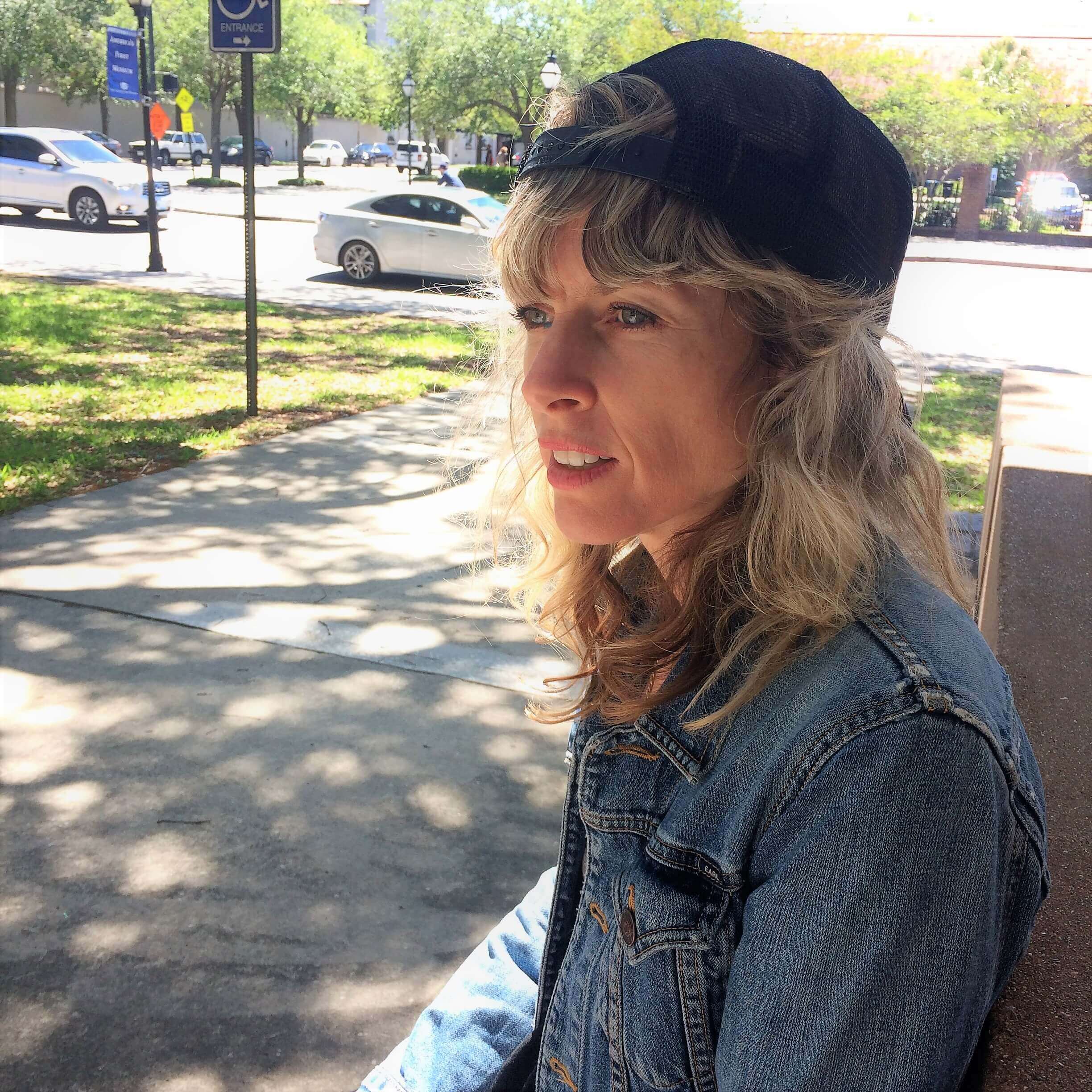 Midwestern Gothic staffer Kristina Perkins talked with author Jardine Libaire about her book White Fur, struggling to be a midwestern insider, mindfulness in writing, and more.
Midwestern Gothic staffer Kristina Perkins talked with author Jardine Libaire about her book White Fur, struggling to be a midwestern insider, mindfulness in writing, and more.
**
Kristina Perkins: What is your connection to the Midwest?
Jardine Libaire: My main connection is the two years I lived in Ann Arbor, 1995-7, when I got my MFA at the University of Michigan while working as a cocktail waitress at the Bird of Paradise jazz club there. I lived in a development that I think was called the Strawberry Estates, and living there felt a bit anonymous, and like a bridge from school to adulthood. There were only twenty or so students in the Hopwood MFA program, and a handful of (great) teachers, so school—for the first time in my life really—didn’t provide a readymade society. This was exciting and also lonely. Memories include starting my car (a tacky little tinted-out gold Jetta) in the deep winter before going back inside to have breakfast so that the engine could warm up enough to drive; realizing this was not the east coast nor the west coast, and that I had a lot to learn; getting my mind blown by Detroit when I went to see music there; partying with a local news anchor in Shaker Heights, Ohio and watching her throw up into an indoor pool at the end of the night; knowing I was an outsider, wanting to be an insider, knowing I didn’t know how to make that happen in two years and leaving somehow enriched and defeated.
KP: You spent four years at a boarding school in Connecticut. You earned your MFA in Ann Arbor, Michigan. You’ve lived in Brooklyn, New York and Austin, Texas. How does your sense of place—and, with it, your sense of belonging—inform your writing?
JL: Writing to me (ideally, hopefully) starts with being mindful, being present of where I am, and so location is often an entry point in thinking about things. Location is also available to study in a way that people aren’t sometimes, if that makes any sense. If I want to drill down and get into a piece of writing, find a way into it that feels real and not like literary fabrications, I often start with a place—either a town, or country, or one square foot of a street, or one particular room, or a field at a certain time of day in a certain season. Then I can figure out some language or detail that feels true and fresh to me, and then I can be excited about the piece. Being excited about it feeling real is so important because even though the piece might still be a mess, that’s what makes it possible for me to sit down to it and work.
Growing up on Long Island, on the south shore, my brothers and I would just ride our bikes for endless hours, investigating miniscule stuff, the details that kids get hung up on—a dead seagull could take up a whole afternoon, an abandoned house could provide new information for months. I love feeling like I’m on that level of exploring when I write, just picking up garbage and leaves and walking slowly through hallways and surveying the candy rack at the deli forever.
Moving around my state, this country, and internationally when I’m lucky, even if it’s just for a minute, always stirs up my heart. In addition to those places listed above, I’ve also lived for a month or more in a bunch of other places, from Vashon Island to Costa Rica to Paris to Wyoming to Vail to Cape Cod to Charleston. I’ll jump at offers of off-season vacation houses from friends—I spent a winter on Martha’s Vineyard, a summer in a ski house. Those month-and-then-some trips have always opened me up to new thinking, new sensibilities, since “place” is physical, but also cultural, and so it’s the people who live there, and it’s how they live, and what they believe that gets “visited”.
And being in a new place is the quickest way I know to wake up, to turn on all my senses and be aware of the moment and the environment. If I’ve gotten into a rut of daily life, then going to a new place for one, two, three days wakes up all the stuff that is good for writing.
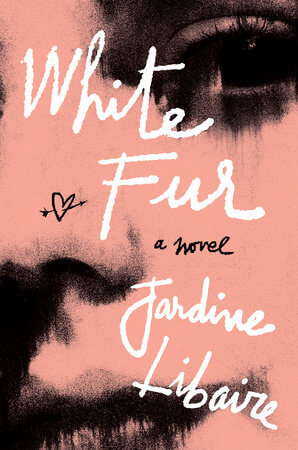
KP: Thirteen years passed between your debut novel, Here Kitty Kitty (2004), and your newest novel, White Fur (2017). How would you describe your growth as a writer between and among these books?
JL: It looks more ordered when I see it from this perspective, but the time I spent between those books felt chaotic, like I was urgently seeking something and I had no idea what it was. (Maybe many of our lives feel that way…?)
The first thing I worked on after Here Kitty Kitty was a television series I dreamed up called The Desire Project. In 2005 I lived in Williamsburg, Brooklyn, which had blown up artistically (for good and bad), and I conceived of a show that was part scripted, starring a character who had her own cable show, and then partly unscripted, using actual interviews with the skateboarders, DJs, sculptors, drag queens, etc, who she had on her own show. I actually shot the pilot with friends, and while we didn’t sell it, it introduced me to the experience of collaboration, and also got me crazy for creative nonfiction.
After that, I pitched a TV series treatment about the modern boarding school, and how strange and dark and wonderful it can be, and the project instead turned into a four-book YA series with Harper Collins that I wrote (under the pen name Caroline Says) with two friends I went to boarding school with: The Upper Class series.
I moved to Austin 10 years ago, and found my way into a loose collective of lunatics and artists headquartered around this place called Justine’s Brasserie, and we have been dreaming up and staging big immersive art events for the past seven years. I also got invited to write the text for a nonfiction book by the photographer Phyllis B. Dooney, and I spent time in the last couple years in Greenville, Mississippi with the family who stars in the book, and we published it earlier this year: it’s called Gravity is Stronger Here. I also started writing screenplays and obsessing over that format in the past decade, so when White Fur got optioned last year by FilmNation for TV, I was able to adapt and develop it myself, and we just got picked up by Amazon Studios.
In terms of growth, I see myself—through the years since Here Kitty Kitty — discovering and relishing the joy of working with other people and with their imaginations. I love the “real” and the “unreal” meeting somewhere and joining forces, and I love rethinking what nonfiction means, and what fiction means. Allowing writing to merge with my life.
KP: White Fur embraces the gritty, the raw, and the heavy, discussing themes such as drug use, mental disorder, racism, and poverty. When conceiving your plot and characters, how do you find balance—in the form of hope, love, or growth—within this heaviness?
JL: There were times when I was writing White Fur when the balance was off, it was too negative, and I have to admit, it felt grim, icky, to be involved. It became a process not unlike some sort of self-care to recognize that this imbalance was happening, and, as in life, to seek out the positive. And that rhythm of ups and downs is woven into the book itself because of that process.
In life, I’m often overwhelmed or enchanted by the darkness and the ugly parts, and just as overwhelmed and enchanted by the beauty and the joy and the eccentricities too. So I kept calibrating the book to some internal register of what felt like a correct ratio. White Fur is a little bit noir, so it does lean slightly more to the sinister than (in my eyes) life does. But not much.
KP: Your prose—easy, graceful, precise—often reads like poetry. Notably, you switched from studying poetry to pursuing fiction halfway through your MFA at the University of Michigan. How would you describe the relationship between your prose and poetry? What does this sort of lyricism add to a novel?
JL: First of all, thank you!
Well, I’ve done experiments trying to write in a more straightforward and storytelling manner, focusing purely on plot and conventional detail, to see if I could do it. And I realized that for me the story is in the tiny details, the juxtapositions, the meter, and the shape of the lines, to a large extent. Those aren’t ornaments or cherries on top, they’re the meat of the story. If I’m not able to write using a poetic sensibility, I can’t really make a story. I wish I could.
If anything, I try to alternate modes—between poetic and more prose-like, so there will be a scene which feels like a standing pool of details and ideas and sensations, and then I’ll push the next scene to be more active and streamlined. But I can’t seem to abandon poetry completely for prose. To mention noir again, I think it was in Raymond Chandler books that I realized even very plot-driven stories can pivot on the jewel in the stickpin in the strangers’ lapel—not that it’s an outright clue, but it brings the scene to life. Even mysteries can be driven by a tiny little detail chosen and used the way it would be in poetry.
I don’t know that the poetic element adds lyricism as much as that the lyricism is simply in the DNA of any story I’m writing. It can’t be broken down and summarized as concrete plot points or themes in a Cliff’s Notes way, but the lyricism is an essential engine in communicating to the reader what is happening, what is at stake—it is the action, it is the character development, it is all the things that another writer might be able to do in something more akin to prose.
KP: In previous interviews, you’ve discussed your own shyness. How does introversion affect your identity as a writer—if at all?
JL: Oh my goodness, I think being introverted for me is at the core being a writer. From a very young age, I can remember feeling outside looking in, and I can remember wanting to connect, and those feelings are braided into feelings about wanting to make meaning out of life.
I remember reading the Joan Didion essay “On Keeping a Notebook” for the first time, where she talks about how some people are born needing to rearrange things on paper all the time, and my reaction was: oh wow, so this is a thing. This is something other people experience the same exact way. It was like looking up some bizarre set of symptoms on webMD, and feeling relief that it had a name. Because from the earliest age of consciousness, I can remember this incredible drive to rearrange things, or make sense of them, or push them past how they began (and ended) in reality toward some new existence.
And then for me it’s been a learning curve in that I’ve gone from being a fairly heavy drinker and “party person” who relied on that lifestyle to get out of innate awkwardness, to connect to other people, to feel like I have freedom and agency—to becoming sober almost 5 years ago. I finally realized that the general discomfort I’ve often felt over the years (that is associated with introverted-ness in my mind) is so important, and should not be numbed or rampaged over. It’s out of that discomfort—and a need to resolve that discomfort—that writing comes. There is tension between my consciousness and the world, to put it another way, and I write to try to rectify it. So by drinking it away, I was forfeiting this incredibly valuable situation.
KP: What is the best piece of writing-related advice you’ve ever received?
JL: I hate when I hear writers say there’s no secret, no back route, no shortcut to creating work, and I also love it, because it shuts down my fantasies and I have to embrace that the only way out is through. The draft is always going to be a mess until one day when it finally feels slightly more ordered than disordered, and the only way to get there is to keep working and keep working. Whenever I’m reminded of that by a writer talking about their own work, it revitalizes me to go out into the brush and keep forcing a path.
I also try these days to treat myself kindly, to gently push myself to work, as opposed to when I was younger and I would be mean and cruel to myself if I didn’t get it done or if I didn’t show up. It was in meditation classes that I was told it’s not effective to berate myself if I drift—that I should just gently lead myself back. This was quite revolutionary advice when I heard it.
To work steadily, with a discipline enforced gently—that’s a compound of ideas I’ve found myself relying on more and more.
KP: Who do you write for?
JL: The reader who will not only tolerate something unfamiliar, something strange and not easily categorized, but the reader who actively wants that.
KP: What’s next for you?
JL: I’m writing the TV series of White Fur now, and we’ll see if we can get it greenlighted into production. That’s a truly fun collaboration, as of now, since I love the producers and the director. I’m also finishing a book about a teenaged girl who is deaf, and who falls in love with a cheetah at a West Texas biker compound. I facilitate a Truth Be Told class at a prison here in Texas, too, in which women learn to write their own stories, to sort out their own lives, to trace, and to describe the path that led to where they are now. It’s a beautiful, humane, dynamic curriculum, and so a lot of my heart is currently invested there too. I’m making these weird tiny little zines with my artist friend Beth Middleworth, just because. And I’m also working on the next event at Justine’s here in Austin, which will be a protest fundraiser to benefit HALT, and will star a Marilyn Minter “Resist” poster she made for us, and will involve musicians and set designers and other friends and family, and will be imperfect and chaotic and full of life and art and love.
**
Jardine Libaire got her MFA in Writing from the University of Michigan, having loved writing and books since she was a kid. Her most recent novel White Fur (Hogarth) was published in May 2017, and was chosen as a Barnes & Noble Discover Selection, an Amazon Best Book, and a Book of the Month Club pick. Her first novel Here Kitty Kitty (Little, Brown & Co. 2004) will be re-published by Hogarth in 2018. Her television-series adaptation of White Fur with FilmNation Entertainment just landed a home at Amazon Studios. Her creative nonfiction collaboration with photographer Phyllis B. Dooney, Gravity Is Stronger Here, (Kehrer Verlag) came out in April 2017. She’s been a recipient of the Hopwood Award, the Glascock Poetry Prize, and Honorable Mention for the Dorothea Lange-Paul Taylor Prize in Documentary. She also belongs to a collective of artists who put on immersive art events at Justine’s Brasserie here in Austin, and she volunteers for Truth Be Told, a writing program for incarcerated women in Lockhart, Texas.
October 16th, 2017 |
 Midwestern Gothic staffer Marisa Frey talked with author Michael Bazzett about his work The Interrogation, the fluid nature of identity, learning to incorporate humor, and more.
Midwestern Gothic staffer Marisa Frey talked with author Michael Bazzett about his work The Interrogation, the fluid nature of identity, learning to incorporate humor, and more.
 Midwestern Gothic staffer Meghan Chou talked with author Edward McPherson about his book The History of the Future: American Essays, shaping an essay collection, the multiple perspectives of history, and more.
Midwestern Gothic staffer Meghan Chou talked with author Edward McPherson about his book The History of the Future: American Essays, shaping an essay collection, the multiple perspectives of history, and more.
 Midwestern Gothic staffer Marisa Frey talked with author Kathleen Rooney about her book Lillian Boxfish Takes a Walk, changing the world through writing, balancing fact and fiction, and more.
Midwestern Gothic staffer Marisa Frey talked with author Kathleen Rooney about her book Lillian Boxfish Takes a Walk, changing the world through writing, balancing fact and fiction, and more.
 Midwestern Gothic staffer Meghan Chou talked with author Nick White about his book How to Survive a Summer, exploring nontraditional queer spaces, outsmarting the hurdles to keep writing, and more.
Midwestern Gothic staffer Meghan Chou talked with author Nick White about his book How to Survive a Summer, exploring nontraditional queer spaces, outsmarting the hurdles to keep writing, and more.
 Midwestern Gothic staffer Meghan Chou talked with author Kristen Radtke about her book Imagine Wanting Only This, visiting ruins around the globe, the unique genre of graphic memoir, and more.
Midwestern Gothic staffer Meghan Chou talked with author Kristen Radtke about her book Imagine Wanting Only This, visiting ruins around the globe, the unique genre of graphic memoir, and more.


 Midwestern Gothic staffer Sydney Cohen talked with author Theodore Wheeler about his debut novel, Kings of Broken Things, the advantages of youthful perspective, tackling the challenge of writing a novel, and more.
Midwestern Gothic staffer Sydney Cohen talked with author Theodore Wheeler about his debut novel, Kings of Broken Things, the advantages of youthful perspective, tackling the challenge of writing a novel, and more.
 Midwestern Gothic staffer Megan Valley talked with author Callista Buchen about her poetry chapbook Double-Mouthed, making sense of motherhood, collaborative writing, and more.
Midwestern Gothic staffer Megan Valley talked with author Callista Buchen about her poetry chapbook Double-Mouthed, making sense of motherhood, collaborative writing, and more.
 Midwestern Gothic staffer Meghan Chou talked with author Dan Chaon about his book Ill Will, writing from multiple perspectives, balancing suspense and tension, and more.
Midwestern Gothic staffer Meghan Chou talked with author Dan Chaon about his book Ill Will, writing from multiple perspectives, balancing suspense and tension, and more.
 Midwestern Gothic staffer Kristina Perkins talked with author Jardine Libaire about her book White Fur, struggling to be a midwestern insider, mindfulness in writing, and more.
Midwestern Gothic staffer Kristina Perkins talked with author Jardine Libaire about her book White Fur, struggling to be a midwestern insider, mindfulness in writing, and more.




